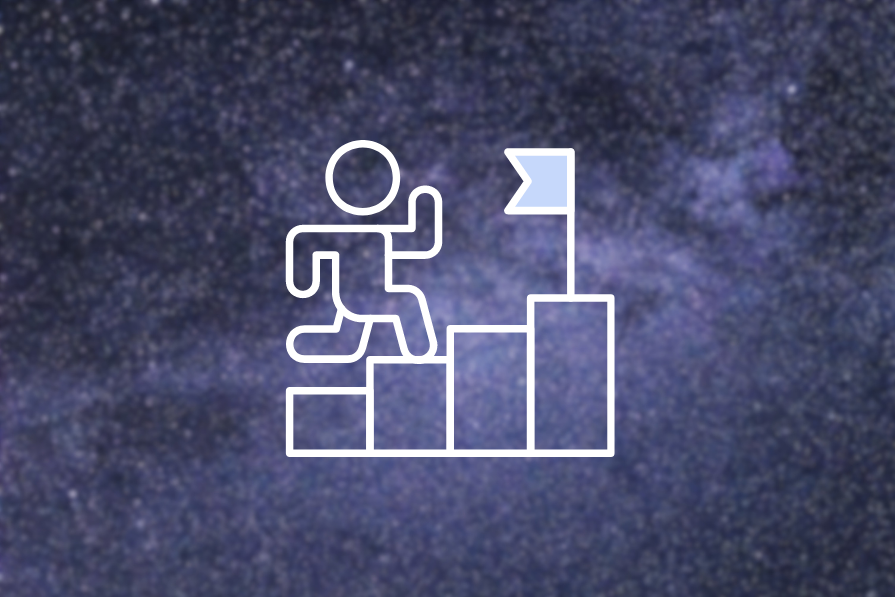
I’ve been mentoring young designers for a long time, and a recurring question I get from them is how they can grow in their professions. Young leaders, too, want to know how to be sure when someone is ready for a promotion.
Well, there is no unique formula to identify when someone is ready for the leap.
Even though some companies have entire career promotion systems to measure soft skills, technical abilities, time within the position, or cultural fit, the reality is that it all goes beyond metrics. Only people decide whether to make the call.
So, what is it to be a senior or a leader? Is it the quality of your design deliverables? Is it your capacity to lead projects and people to make accurate estimations? Yes, these factors sure elevate you to the next level.
But there’s more to being a senior.
Beyond good metrics that back up your good performance, two aspects might influence your potential: how you execute something (expected in any position or industry) and how you generate influence in your team and work (sometimes overlooked in companies).
So, whether you’re in a leadership position or an individual in a design team, this blog will introduce you to two key ideas for your UX career — the range of execution and influence.
This first aspect of execution in UX refers to everything you need to build or create in time and form within your responsibilities—whether mockups, concepts, research, or user flows.
This is the most common and recognized by all designers. All our careers start from there. When we are young designers, most of our actions are to deliver things, sometimes without having the big picture of the projects. Over time, we start to master execution, depending less on a leader’s approval.
Depending on our potential, we might get an invitation to participate in bigger decision spaces (influence):
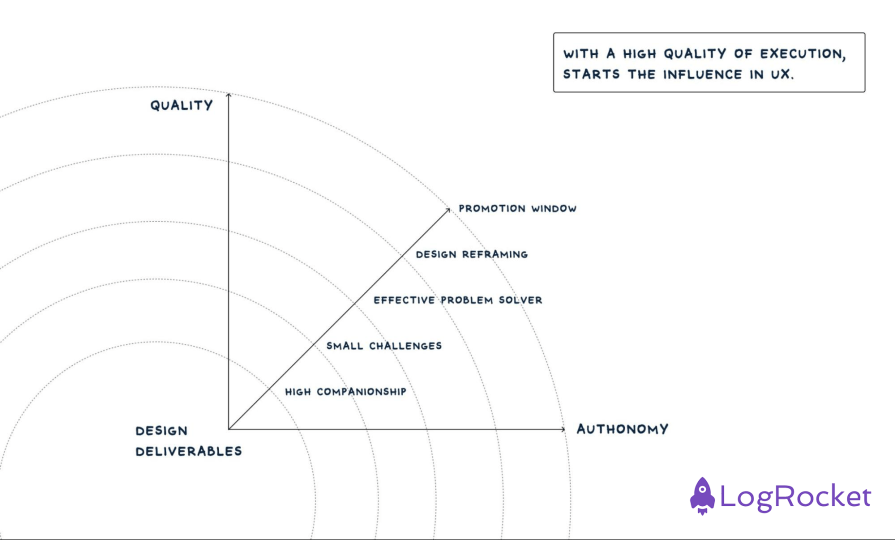
If your work only depends on execution, you might miss a significant portion of the action. It all depends on what you want as a designer, but staying in this dynamic for a long time can be repetitive and frustrating and does not generate a unique value.
I know many good designers who are comfortable staying in this dynamic, which is good because it responds to their professional aspirations and happiness. But if you want to transcend your work in design, you should pay attention to how to start making a difference beyond just crafting.
Perfect execution is the basis of influence, and together, they create a game of opposites that reflects our evolution as designers.
I remember disagreeing with an ex-boss a few years ago about deciding to promote a brilliant designer on my team before he completed the expected time in his position. To him (my boss), this person needed to stay a couple of years more doing regular semi-senior duties because the company demanded that he complete a time requirement before being considered to take the next step.
My arguments at that time showed solid evidence of how teammates and prominent stakeholders were delighted with his performance beyond all his expected responsibilities and seniority. To me, he was ready to take on more significant responsibilities.
When I was collecting evidence of this talented designer, I found a unique phenomenon around the team where the designer was working — all the conversations around the work sparked new ways of facing challenges and also opened new ways to build new products.
Innovation was served, and it was delightful to watch.
After a lengthy discussion that did not result in an agreement, my boss decided to keep this designer in his current position for two more years. After a few months, the designer received a job offer from another company and left; we had to let go of a great talent.
What I learned from this situation was eye-opening — beyond company metrics, there are some factors from the people side to consider when deciding to elevate someone to the next level.
How you influence and impact the company through your work is highly relevant.
The designer’s story I mentioned was about fulfilling job expectations and going beyond. Influence in UX is when, through your work, you start to change established things, people dynamics, and mindsets.
Can we do something similar from our position? How do we get there?
A few skills expand one’s range of influence beyond one’s seniority. These skills can be present and developed in any design job position, from junior analysts to high management profiles:
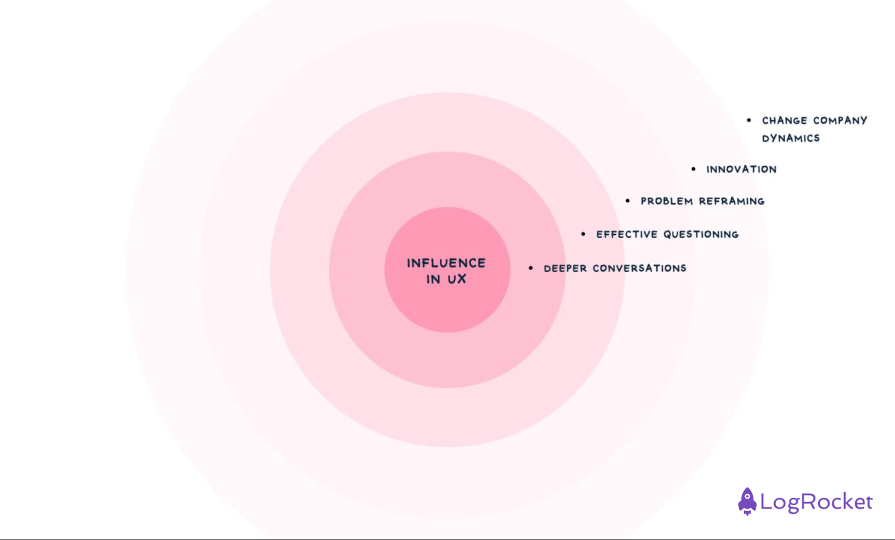
All these qualities reflect a high seniority in a design position. So, the level of influence might be higher than a position. And that’s a factor that should be more prominent in the promotion decision-making.
I can identify a few scenarios where the movement of the two aspects (execution and influence) define our evolution as designers, which I’ll discuss in the next section.
This scenario is the most common at the beginning of a young designer’s career. It is all about delivering things in time and form, and the main characteristic is the leaders’ continuous supervising eye:
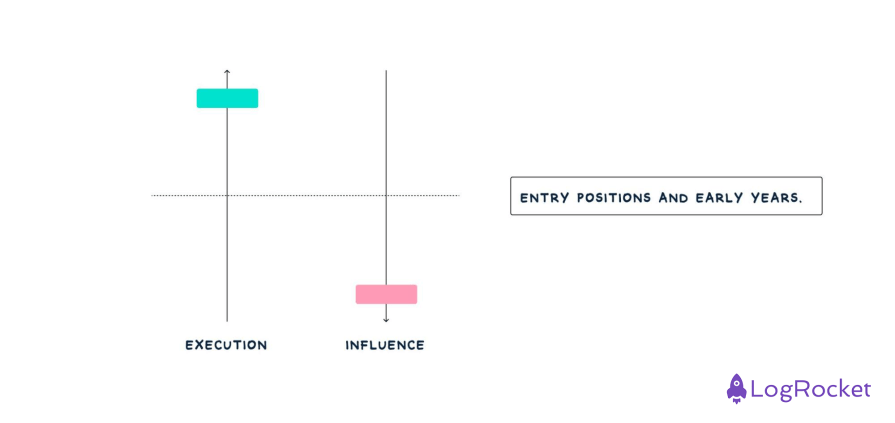
Average profile:
Junior designers starting a professional career
Main challenges:
Consideration for a promotion:
This scenario shows some equivalence between what we do and the impact of our work. At this point, design software is no longer a challenge; it can be an extension of your thought to illuminate an idea or approach. We gain more responsibilities, and our work speaks for itself:
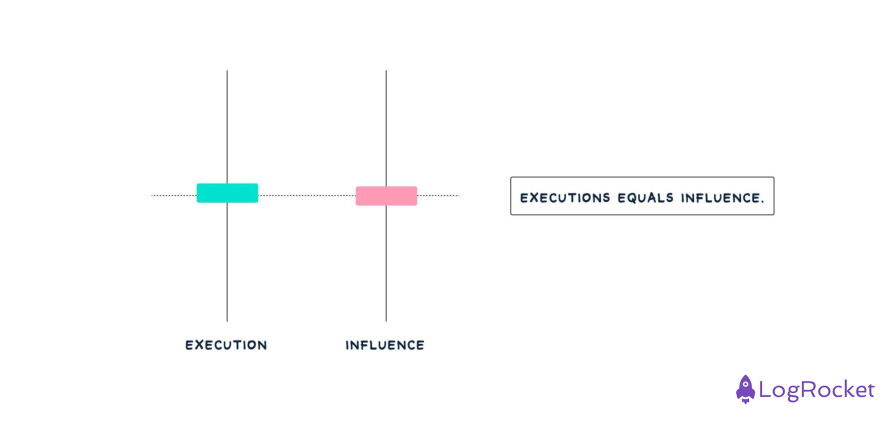
Average profile:
Semi-senior (mid-level) designers with some years of experience in companies
Main challenges:
Consideration for a promotion:
You may represent an area or a UX team, so your responsibility is significant. Your mission is to create a design mindset outside your team and “design” strategic solutions. This scenario is deeply tied to high-management design positions, but everyone, despite the name of the job, may expand their range of influence to move forward in their career.
Naturally, the maturity of influence manifests with years of experience and understanding of the discipline and is more evident in highly senior profiles in companies:
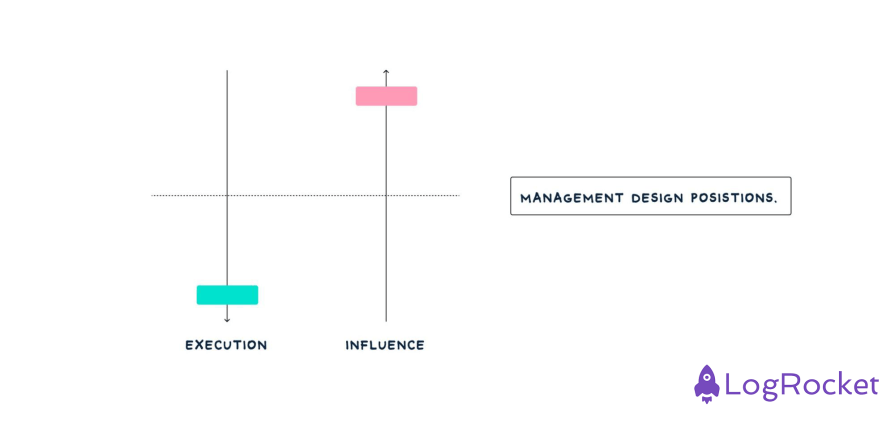
Average profile:
Leads and up
Main challenges:
Consideration for a promotion:
This scenario was scarce years ago; now, it is almost indispensable in every start-up company. Some seed start-ups need this profile because it can adequately combine a high execution range (time and form) and make strategic decisions to make the company grow (high influence):

Average profile:
No matter the position name, what’s important is experience in the industry and the ability to build innovative ideas
Main challenges:
Consideration for a promotion:
In this case, the designer’s growth depends on how the company grows. If numbers are positive, this profile starts to build a complete UX area and define some work dynamics; it is a perfect opportunity to create a design mindset from scratch.
What is to grow? Is it a matter of hitting company metrics? The short answer is yes if we refer to a way to measure and track our progress in a company.
But what is it really to grow as a professional? It is all about changing things, reframing challenges, creating opportunities, and not staying still.
If you think about it, education and life are more than numbers. You may be the most brilliant alumnus of your class, but you can also lack a human touch, so in the end, that is not a good formula for success.
The same thing happens in professional life. Numbers are a solid measurement of how to progress. But they are not the only source of truth about you.
My answer to those who ask about how to know when someone is ready to evolve will be this question: How big has the impact of your work been?
Seek information on what people say about you, your execution, and how you have been part of significant changes above what is expected of you. That’s growing.
LogRocket's Galileo AI watches sessions and understands user feedback for you, automating the most time-intensive parts of your job and giving you more time to focus on great design.
See how design choices, interactions, and issues affect your users — get a demo of LogRocket today.

Small actions can have large consequences in complex systems. Here’s how UX designers can manage dependencies so users feel informed and in control rather than blocked or blindsided.

This article examines when hero sections are necessary in digital products, when they create friction, and how to evaluate them using UX goals, primary actions, user flow impact, and real-world alternatives.

AI speeds up tasks like research synthesis, ideation, and first-draft wireframes, but it can’t replace clarity, taste, or decision-making. Here’s a grounded look at what AI actually does well in UX right now.

Discover how to craft UX-friendly hero sections with examples, design tips, and strategies that drive engagement and conversion.